In October and again in November, the action moved to Kingsbury Water Park near Tamworth and what great action it was! The Kingsbury Z class race had been postponed from earlier in the year when the water park had been flooded. Their rescue boat had apparently been floating around inside their cabin. In addition, pedalos had invaded the model boating lake at Eastbourne for the summer. The Eastbourne Z class race was cancelled, but thanks to the Kingsbury club the AA-D classes event was moved to the Midlands to be the final event of the season. OMRA/Dateline Marine Z class at Kingsbury Water Park, Tamworth, 14th October 2007, by John KerrThere was very little wind on this sheltered water, but the autumn leaves and feathers on the surface were slowly blowing into the corner where the pits are. This was to cause some problems with water-cooling blockages during the day. Can anyone design a weed free scoop? Before the racing began there was a quick test of Gary Wilkinsons new air intake system and I needed to test Chris Hines boat. The con. rod had broken in Chris Hines boat in the last round at Maidstone and he now had my Nova engine installed. This is definitely not the time to set up a boat! It was just a quick run without the GPS and it appeared to be ok. After a giving Geoff Stent time to fix a throttle problem, the standard boats were away. Kevin Bird took the start, but his boat was definitely going slower that the others. One of the boats had its number on the deck and not on the side, so Dave Clay could not see the number as it went by to record the laps. The OMRA rules state: 2ins or 50mm high for the numbers (height being the vertical difference between the bottom and the top). Clear numbers are essential for accurate recording of your score. Keith Weller had no such problem as he took a commanding lead with 50 laps. Gary Wilkinson came next with 45 laps, his new air intake clearly working. Ted Aggett, Jean Kerr and then Dave Clay were close behind and all covered by just one lap. Julie Hines water cooling pipe came off and the boat stopped. Once replaced unfortunately it did it again, dropping her well back down the order. Ted Aggetts unrestricted boat was again spectacular, because this boat is so well balanced and is a joy to watch, but it was Kelvin Bird who set the pace, needing to beat Chris Hine to stay ahead in the championship. Shannen Wilkinson drove her Z-3 into third place ahead of Chris - his boat was definitely running slow after the inadequate test. Steve Bond was not far behind and then came Geoff Stent. Paul Weller and I had a collision which did neither of us any good. Dave Clays previous race winning Warlock did not go well this month and Dave Monck had serious problems recording just one lap as his boat kept stalling. At lunchtime Dave Monck tried different propellers and Chris Hine retuned his engine. Both were to do better in the afternoon. Ted Aggett was extolling the virtues of his £1 boat aerials quite a bargain. In the first race after lunch Clare Rogers restricted boat stopped and couldnt restart because Keith Weller had dropped it and broken the shaft. Again, Kelvins restricted boat wasnt going very well, although slightly quicker this time, but he pitted several times. Gary Wilkinsons Z-6 stopped and then he then kept coming in to adjust his boat, losing at least ten laps. Weed on Julie Hines rudder slowed her boat and made it steer to the left despite full right trim. However the cooling pipes stayed on and she added 43 laps, moving her up the results for enough points to stay ahead of Gary in the championship. Jean Kerr ran over two marker buoys and on the second occasion broke the propeller. After replacing the prop and whilst trying to restart, it was discovered that the glowplug had also failed. In all this cost her about six laps, but she still hung on to third place. Dave Clay kept coming in to clear weed from his propeller, but still made 44 laps which was enough to take second place from Jean. Keith Weller seemed totally unaffected by the leaves and weed and this time added 54 laps to his score, making it a decisive win for him and his Harpoon design. By contrast the unrestricted boats were very reliable in the afternoon races as surface drive tends to clear weed from the propeller as it goes. There developed quite a race between Shannen Wilkinson, Chris Hine and Kelvin Bird, all trying to get close to the marks and catch the one in front. Although not quite set right, Chris boat was going much better and managed to pass Shannen. Kelvin was fastest but always taking a wider line and eventually he passed Chris. I still havent changed the carb. on my engine and I just drove at about two thirds throttle, stayed out of trouble and added 54 laps. Reduced throttle doesnt make my boat very much slower, but apparently keeps it going. Ted Aggetts Miami became somewhat erratic and eventually stopped with about two minutes to go. His £1 aerial had let him down! Apparently it had fallen off and was dragging in the water. Intermittent reception caused the erratic performance until radio contact was lost long enough for it to failsafe. With no apparent problems Kelvin took an excellent win. Chris just beat Ted on countback for second and Shannen came fourth just one lap behind. Kelvin had pulled three more points ahead of Chris in the championship with just one round to go. There must have been something slippery about the water. As the last race finished, Gary dropped Shannens boat and broke her prop shaft. Perhaps both Clare and Shannen should change their pit crews? Dave Monck won the concours trophy and after the racing we watched club members testing a proboat cat and an electric Cherokee Chief. Thanks to the Kingsbury club, particularly Sue, Gill and Robin. Hopefully all the water will stay within the lake for next season. |
|
OMRA AA-D classes at Kingsbury Water Park, Tamworth, 11th November 2007, by Stewart RaeWhen the Eastbourne and Willen races were cancelled during the summer months, Robin Butler kindly offered Kingsbury Water Park as a replacement. Our thanks go to the Kingsbury Park Model Boat Club for allowing us the use of the water for the second time this year. For some, this extra event meant changes in the championship results table and some went up and some unfortunately went down. The fairness of this was raised at the OMRA AGM just one week later and Im glad to report that the membership have taken steps to ensure it doesnt happen again. Anyway to the racing.. Most of us thought it was the usual 10.00am start, but Robin Butler O.O.D. managed to start a bit earlier at 09.45. Weather wise it was cold with sunny periods and a stiff westerly breeze. The Kingsbury lake is well protected from the wind on all sides, so this wasnt going to be a problem. AA class as usual were the first out of the pits with a couple of problems from the off. Andy Rennies Rossi21 powered Crusader ran fine on the bank, but as soon as it was launched into the lake the engine stopped. After several attempts Andy gave up (maybe the water temperature wasnt to old Rossis liking?). Mark Beesleys nicely turned out Bat Boat suffered from a broken shaft in testing and never made it to the race start. Gary Wilkinson had a return to the pits with his Aasvogel and at one point was nine laps behind Robin Butlers Crusader, but with the Aasvogel sorted he set about playing catch up and it took him until the very last lap and the very last buoy to take the win from Robin by 0.1 on countback. Dave Clay and Danny Bells boats both suffered very early on in the race, but they still each took home a handful of points for their efforts. There are some schools of thought that would like to see a percentage rule where scores are calculated against the number of entries in a race. This might seem a fair way of scoring to some, but on the other hand if someone has taken the trouble to travel halfway (and sometimes a bit more) across the country to a race why should they be impeded by a lesser result than they are presently entitled to? Nuff said! With little attrition in the A class, race rescue had time for a rest. Just a few laps separated the top two boats, both Crusaders, belonging to Robin Butler and Bernard Holder. Young Shannen Wilkinson had a good race bringing her boat home in third place, well in front of some seasoned racers. Danny Bell managed to pass his usual and unlucky for him this year 13 laps by scoring 19 and taking home four championship points. In the next race which was for B class, Danny had a very quick Picco powered Challenger until a flip at buoy one, caused by engine failure and a broken con. rod, saw an early exit on guess what, yes lap 13 again! You must let us into the secret Danny, at least its consistent scoring. Andy Rennie was in fine form to take first place, but his boat was slowing towards the end of the race. Flotsam in the engine cooling system was the culprit (this time of year there are many leaves in the water which can cause problems with water pick ups, propellers and rudders) causing his CMB to overheat. You could smell the heat when he took the hatch lid off, so a bit of a winter engine rebuild I fear. Bernard Holder took second place with his CMB Magnum followed by Mark Beesley driving his HB powered we still dont know what it is boat. Nice to see Arthur Preou back racing to take first place in C class with his Phase Two just a couple of laps in front of Robin Butler who managed second place on a count back of 0.1 with his CMB/Apache from Bernard Holders third placed CMB/Magnum. All credit to these guys as it was a very high lap scoring race. Nigel Bedford withdrew his boat after 29 laps when he realised there was a problem with the CMB90, a good decision as it turned out, since a closer inspection revealed the rear engine bearing was near to failing. D class had quite a high entry and was split into two heats. I pit for Gary Pope and we were scheduled for the second heat, so I took the opportunity to pit for Tony Gilder in the first heat keeping lookout for his Spirit of Norway. Tony ended up with only 8 laps due to the flexi-shaft slipping under load in its coupling, although it was done up as tight as it would go. Still he took home a couple of points for his trouble. Robin Butler took this first heat win (third overall) after a collision with second placed (fourth overall) Simon Beament driving his Zenoah26 powered Apache. Phil Hatcher managed 32 laps before throttle problems saw retirement and a third (seventh overall) place for his Q.D.26 Sigma51. In D class heat two, Kurt Cave set a blistering pace testing his new for 2008 Sikk27 powered Patriot from the bluefishy78 stable. With just seven minutes to go to race end the Patriot collided with John Smiths Ocean 52 on the back straight upending it. At this point Kurt was nine laps ahead of John Hand and had already passed Robin Butlers first heat winning total of 80 laps. After rescue and several attempts to re-start the engine, the Patriot finally got back into the race on the same lap and within yards of Johns boat. Half a lap later the Sikk engine stopped again leaving John to carry on to take race win with a slowing boat. John Smith carried on to take third (fifth overall) and Mark Beesley finished fourth (sixth overall). Gary Pope was hoping for another win to take maximum points this season, but it wasnt to be as on lap 20 of this second heat his Sigma51 suffered terminal electrical failure in the radio box. Arthur Preou took the highest laps of the day trophy in C class with his Phase Two managing 108.1 laps and John Smith had a surprise, taking home the Concours dElegance trophy for his nicely turned out Ocean 52 and that was not the only surprise for John this year as I will reveal in the next issue of Model Boats. Thanks to the Butler clan for organising the event, Adrian Peters from Kingsbury MBC for his time in the rescue boat and a good days racing was had by all. On occasions this year I have mentioned people who make parts for model boats as we are often asked where we get our bits and bobs from, so here is a mention of another maker of parts, Rod Gabriel. Rod has returned to the hobby after a bit of a lay off due to illness and by the time you read this he should have produced his new parts brochure entitled R.G. Racing. He can be contacted on 07707 695221. I took some photos of one of Rods boats including a multi boat called Gremlin. There are some innovative designs on this boat that can be utilised for any i.c. boat - Rod produces deep vee as well as multi hulls. Next month its the 2007 championship results report for the AA-D classes. |
|
The ABC of powerboat bits - TA constant, steady supply of fuel to the engine is critical to its operation. It is therefore important that no air should enter the fuel line. This is normally achieved by using one of three types of fuel tank. An aeroplane type fuel tank (sometimes called a clunk tank) has a flexible tube inside the tank to pick up the fuel. On the end of this tube is a weight to ensure that wherever the fuel is in the tank, the pick up pipe will always be in the fuel. This type of tank will work upside down. The second approach is to use a tank with a small sump at the bottom. If the holes through into the sump are small, fuel will tend to remain in the sump even when the boat is buffeted by waves. This form of tank only works the right way up. To prevent fuel leaking out and water getting in should the boat capsize, the vent tube should pass through the bottom of the tank nearly up to the top inside. To reduce the possibility of fuel draining into the engine before the start the outlet should be from the sump up through the top of the tank. The third type is a bag tank. The bag must be filled to the brim so there is no air inside. The bag will collapse as the fuel is used and no air will get into fuel line. If you need to use pressure with a bag tank, the bag needs to be inside another sealed tank so that the pressurising gasses press on the outside of the fuel bag. Large motors use a significant weight of fuel in a forty-minute OMRA race. The fuel tanks therefore have to be distributed evenly about the centre of gravity to maintain boat trim as the fuel is used. Multiple tanks should have a balance pipe joining them to ensure the fuel is used evenly from all tanks. A second, much smaller aero-type tank is sometimes used near the engine to catch any air bubbles that do get into the fuel line. Float chambers can be used to maintain a constant head of fuel for the carburettor, but are generally of a design that does not work well in very rough conditions and does not work at all upside down. Some older petrol engines have float chamber carburettors that require gravity fed fuel and with these the tank must either be positioned above the carb., or a separate fuel pump must be fitted. Most petrol engines have fuel pumps built into their carburettors, so the tank can be lower. Threads. Not everything is metric! American manufactured parts are in imperial measurements such as a 3/16 or 1/4in propshaft. Equally, American propellers have imperial diameter holes. A 3/16 prop will not quite fit on a 5mm shaft. A 1/4in prop would be loose on a 6mm shaft. Also the threads used vary, although an M5 nut will fit well enough on a 2BA bolt. European props are metric. If you need to tap out a standard metric thread, the drill size for the pilot hole is the diameter of the thread less the pitch; e.g. for an M5 x 0.8 thread the drill size is 4.2mm. Be aware that threading a rod makes it weaker. A 6mm rod is reduced to just 5mm diameter inside the thread. For this reason threading a 6mm gearbox output shaft often results in failure. It is much better to use plain shafts in the drive train. Trim tabs attached to the back of the boat provide some adjustment to the running angle of the boat. Start with them level with the hull bottom. If they are adjusted down then that will bring the nose down and adjusting up may cause the nose to rise. Often more down trim is required on the right-hand tab to counter the torque effect of the propeller. When fitting trim tabs ensure that their front edge is marginally above the hull bottom, never below it or unnecessary resistance and erratic handling will occur. Come racing and you could be a national champion!To take part in OMRA races you have to be a member. All the information and membership forms come from the website www.omra-uk.org or just contact one of the committee: Chairman, Kevin Jones, 5 Kenrick Square, Bletchingley, Surrey RH1 4PU; 01883 743477; [email protected]: Secretary, Alan Baldry, 7 Hyde Way, Wickford, Essex SS12 9BH; 01268 462640; [email protected]. |
Want the latest issue of Model Boats? Use our magazine locator link to find your nearest stockist!
 Make sure you never miss out on the latest news, product reviews and competitions with our free RSS feed
Make sure you never miss out on the latest news, product reviews and competitions with our free RSS feed

We welcome well written contributions from Website members on almost any aspect of Model Boating with a particular emphasis on practical hints, tips, experience and builds.
In order to maintain a consistent standard and format, all suggestions should first be sent to me by Personal Message for approval in principle. Only a very limited amount of time is available for editing contributions into a suitable format for placing on the website so it is important that the material is well presented, lucid and free from obvious spelling errors. I think it goes without saying that contributions should be illustrated by appropriate photos. I shall be happy to give advice on this.
The Member Contribution area offers space for short informative mini articles which would not normally find a place in Model Boats magazine. It is an opportunity for Website Members to freely share their expertise and experience but I am afraid that virtue is its own reward as there is no budget to offer more material recompense!
I look forward to receiving your suggestions.
Colin Bishop - Website Editor
Model Boats Magazine
- Landing Craft Mini PLan
- Riva Aquarama Build
- Scale Colour, Sound & Speed
Digital Editions
- Access your digital editions
Subscribe Now
- Every issue delivered right to your door
Renew Now
- Save & never miss an issue!


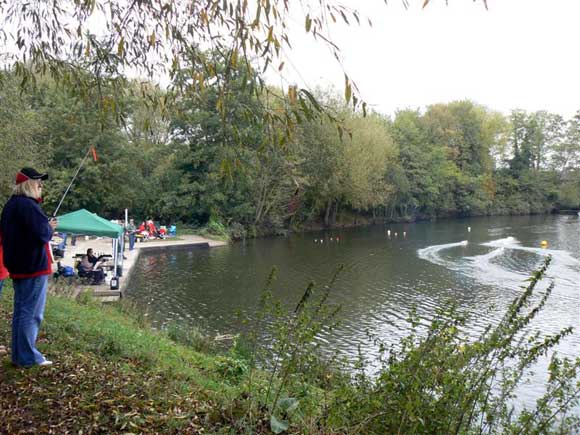
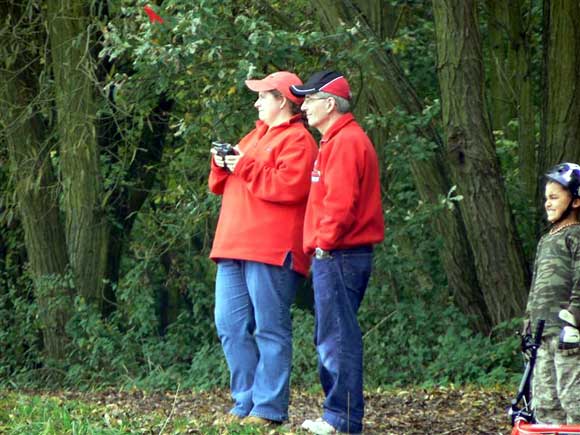
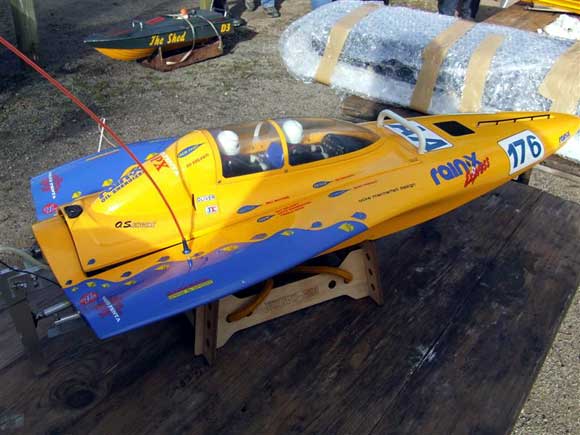



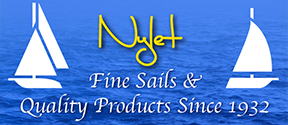






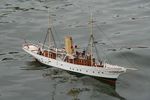
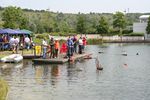

 Register
Register Log-in
Log-in



